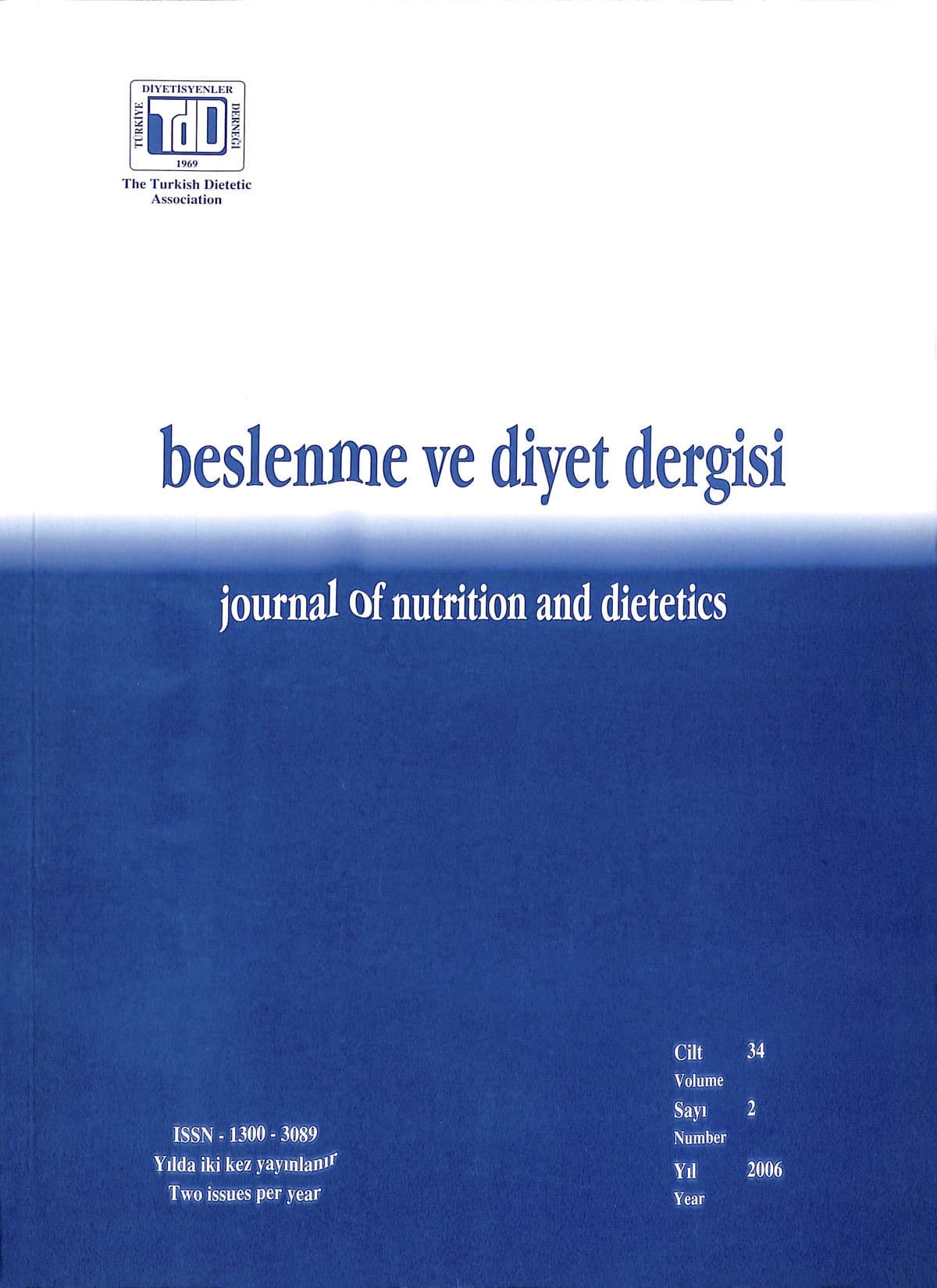The Evaluation of the Attitude and Behaviours of Working and Non - Working Wotııen about Meal Planning Living in Different Socio - Econonıic Status
Keywords:
Nutrition, meal planning, socio - economic status, attitude, behaviourAbstract
The objeetive o f this study is to evaluate the meal planning attitude and behaviours o f working and non-working women living in different socio-economic status. This study has been conducted by random sampling on 500 working and 500 nonworking women between the ages o f 21-50 years, living in Ankara. A questionnaire was applied to these women and the statistical analyzes were done by % (percent) values and correlation analysis. The results show that the education level o f working women is higher than the nonw o rk in g women an d as the ed u ca tio n lev e l increases, reading the articles about nutrition in newspapers and magazines increases (It is 31.2% and 25.6% in working and non-working women respectively). The higher the socio-economic status, the greater the use o f convenient foods. The percentage o f women deciding on the type o f food to be served fo r the meals is 72.5% and this percentage is higher in working women. The percentage o f women who are deciding meal types in daily basis is 60.7%. Most o f the families eat their dinner together with their family members at weekdays (working 95.6 % and non-working 88.0 % respectively). This ratio is över 94.4% at weekends fo r both groups. It was fo u n d that 39.7% o f the working women and 16.3%) o f nonworking women were going to fo o d shopping (milk, yoghurt, cheese, meat, chicken, fish, egg, legumes, vegetables, fruit, rice, pasta, flour) with their husbands. In the families o f both working and non-working women, the bread is bought by the door keepers with the percentages o f 26.8% and 19.8% respectively. The percentages o f the vvorking and non-working women making a list fo r food shopping and buying the fo o d from market are 45.2%>, 34% and 64.4%, 43.3%, respectively. Mostly vvomen at both groups are allocating 2 to 3 hours per day o f their time fo r fo o d preparing and cooking. The percentages o f the families going out fo r dinner once a month are 54.4% and 30.4% fo r working and non-working women. Some o f the families order meals from the restaurants, having delivery systems twice a month (It is 43.6%> and 28.8% respectively). The fin d in g s show that the vvorking situation and socio-economic status o f vvomen effect their attitude and behaviour about meal planning.

